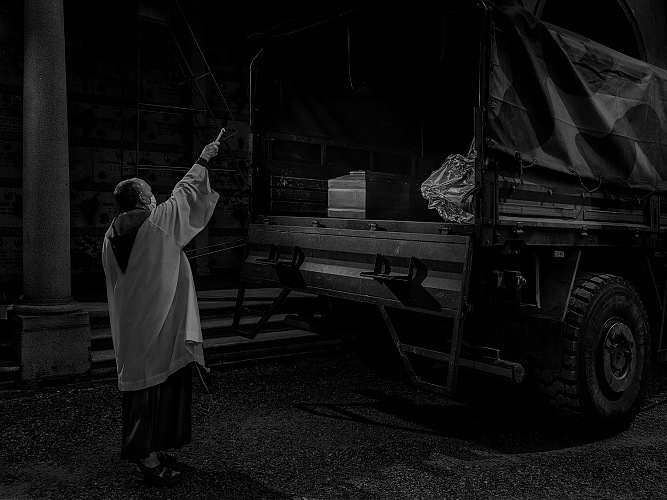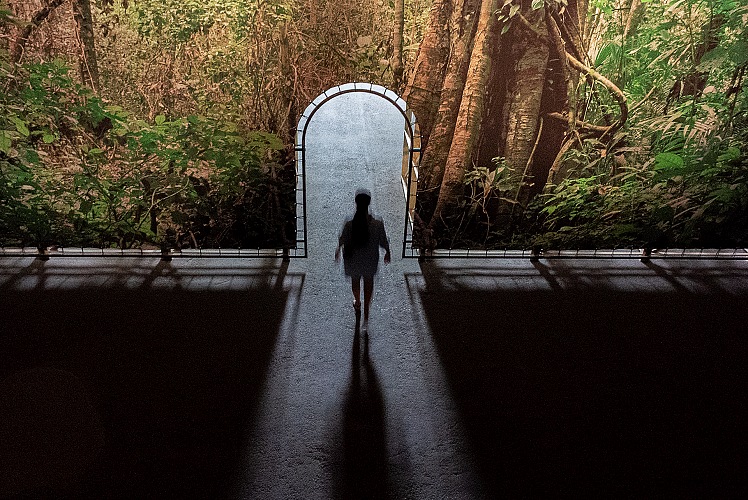Another Language
The exhibition Another Language is ideally inspired by an exhibition (New Japanese Photography) realised in 1974 by John Szarkowsky at MoMA in New York. If on that occasion the merits of the exhibition was to open its doors to a new understanding of photography, created by the Japanese cultural movement, in the exhibition at Arles it offers the public a chance to come into contact with a cultural declination not always accessible to the viewer. Precisely in underlining the differences between the gifted iconic and symbolic West and the countries of the Far East, you can pinpoint what we believe the greatest merit of this collection of about two hundred images, many of which are unpublished.
In a succession of authors consecrated by internationally renowned contemporary artists and others less famous, also the subject of the research of individuals appears varied. The exhibition as a whole is thus presented as an exhibition of great interest, as long as one does not think of it as comprehensive of a panorama generated by a cultural movement, which requires in any case the possession of appropriate cultural keys of interpretation. One example for all could be established by Dogura Magura, the work by Kou Inose, which in order to be understood beyond the mere formal aspect necessarily requires knowledge of the novel of the same name by Kyusaku Yumeno, set in a psychiatric hospital where the main character wakes up and finds himself having to face Dr Wakabayashi. Who accuses him of murdering his girlfriend and declares to be able to redeem him from his state of confusion. This is through a complex process of interrogation with which are identified the fundamental points of his existence. Somehow inspired by the vicissitudes of the protagonist of Dogura Magura, Inose seems to proceed with the recovery of a memory of himself looking for traces in the form of images of his own identity.
Some questionable choices of Romanisation of Japanese terms (see Dogra Magra) that seem to ignore the coding Hepburn-shiki romaji, internationally recognised in favour of a transliteration that, to a French ear, responds to the need to fix the sound of the words in Western characters. Interesting instead the proposal of the not so well known in the West Masahisa Fukase who, with a certain rigour, documented in a symbolic way the drift of his relationship with his wife, capturing her on film consistently from the window of his home.
The exhibition as a whole is minimal, and in general can be considered a good level despite the obvious primacy assigned to authors like Moriyama or Hosoe. However the lighting used for the solarisation of Daisuke Yokota and Sakiko Nomura is deplorable, objectively difficult to read, and only from embarrassing distances in the proximity of the photographic surface. Distances, on the other hand, not reachable as in the case of many images by Yokota placed at a... quote not compatible with the height of a human being, even if very tall. The consequence has been to offer the viewer black elegant panels lacking legibility, suitable, perhaps, as items of decor in the hands of a skilled architect, but unlikely at least in the context at an exhibition of photographic prints. [ S. I. ]
- - -
ANOTHER LANGUAGE: Huit photographes Japonais
Eikoh Hosoe (1933), Masahisa Fukase (1934-2012), Daido Moriyama (1938), Massatoshi Naito (1938), Issei Suda (1940), Kou Inose (1960), Sakiko Nomura (1967), Daisuke Yokota (1983)
Église Sainte-Anne | until August, 30th 2015
admission fee: 9,00 €
published on 2015-07-09 in NEWS / EXHIBITIONS
ARLES ARLES2015 Asia Giappone KouInose MasahisaFukase DaidoMoriyama EikoHosoe DaisukeYokota SakikoNomura SandroIovinemore in EXHIBITIONS
categories
EXHIBITIONS CONTEST WORKSHOP EVENTS MELTINGPOT BOOKS PORTFOLIO VIDEO ONGOING THEMATICPATHS YTOI OPINIONS FPART COVER READINGIMAGES SMARTFOLIO FPBLOG FPLAB
recent news
FPmag
editor in chief Sandro Iovine | sandro.iovine@fpmagazine.eu - senior writer Stefania Biamonti - web developer Salvatore Picciuto | info@myphotoportal.com - linguistic coordination Nicky Alexander - translations Nicky Alexander, Rachele Frosini - contributor Davide Bologna, Mimmo Cacciuni Angelone, Laura Marcolini, Stefano Panzeri, Pio Tarantini, Salvo Veneziano - local Lazio correspondent Dario Coletti local Sardinian correspondent Salvatore Ligios - local Sicilian correspondent Salvo Veneziano - editorial office via Spartaco, 36 20135 Milano MI | redazione@fpmagazine.eu - phone +39 02 49537170 - copyright © 2015 FPmag - FPmag is a pubblication of Machia Press Publishing srl a socio unico, via Cristoforo Gluck, 3 20135 Milano MI - VAT no. 07535000967 C.F. (TAX code) 07535000967 - Copyright © 2015 FPmag - Registered at Tribunale di Milano No. 281 on the 9th September 2014

















































